Shops
& Businesses
Hotels and Inns
Llangollen and Llantysilio
have been renowned through history for their hotels, inns
and public houses, both for the quality of the local beer
and for the sheer number of places where it was possible to
buy a drink.
At the end of the 19th century
there were over 35 pubs and hotels, 3 beer retailers, 5 brewers
and 1 wine and spirit merchant in this small area.
|
| top of page |
|
The Hand Hotel was most probably ‘the
great house’ referred to in the Chirk Castle accounts of
1684 and was one of the principal coaching inns of the town
in times when the main London to Holyhead road
ran past the door.. The name of the
inn comes from the red or bloody hand, the crest of the
Myddletons of Chirk Castle. In 1752 the Hand was an Inn kept
by Thomas Edwards and in the 1780s the Ladies of Llangollen
refer to Mr Edwards of the Hand begging them to use his pew in
the church. The diary of John Hughes from the 19th century
tells us that ‘1810-1815 the Hand Hotel was enlarged, and K,
Uncle’s house was added to it, and all the small houses from
C to H were levelled down’.
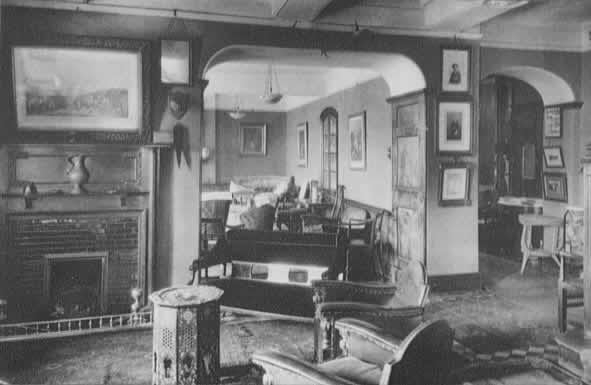
The 1830 Pigot’s Directory shows Jos
Phillips owning the Hand Hotel. Sometime in the following 14
years Jos died, but the hotel continued to be run by his widow
Amy Phillips. Amy died in 1859 and the hotel was sold to the
Edwards family. Harriet Edwards managed the hotel in the 1880s
and was succeeded by Anne Edwards. Around 1900 the Hand was
again sold, being purchased by J.S. Shaw who had previously
run the Royal Hotel. He remained the proprietor until the
1930s being succeeded by J.A. Begg and later, in the 1950s by
Mr and Mrs Alfred Brown.
|
| top of page |
|
The Wynnstay Arms was another coaching inn,
probably built in the 17th century. The steps up to the
entrance formed a mounting block for horse riders. Until
the early 20th century it was known as the Eagles Inn, so
named from the spread eagle that formed part of the coat of
arms of Sir Watkin Williams Wynn of Wynnstay who owned the
land. In the alehouse register of 1752 John Simon is recorded
as being the landlord, but by the 1830s the inn had passed
into the hands of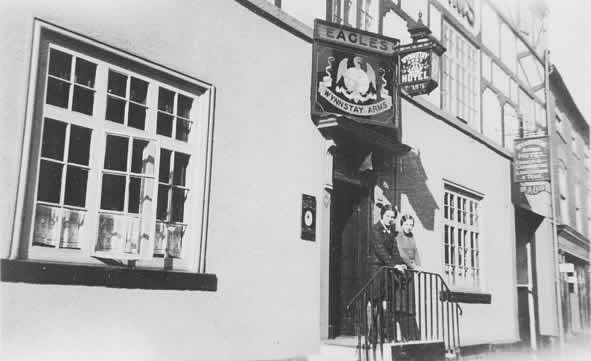 Thomas Pugh and his wife Margaret. In 1845 Thomas Pugh died
and Margaret continued as landlady until around 1860 before
handing over to their son Samuel, who’s wife Sarah had died
8 years before.
Thomas Pugh and his wife Margaret. In 1845 Thomas Pugh died
and Margaret continued as landlady until around 1860 before
handing over to their son Samuel, who’s wife Sarah had died
8 years before.
Samuel Pugh continued at the Eagles Inn for
another 30 years, marrying for a second time to Mary. Samuel
died in 1890 and Mary ran the inn for another 5 years before
selling to Godfrey Tamlyn Allen. In the same year of 1895
their grandaughter Sara Corwena Magdalena Pugh Jones was born
to their daughter Anne and her husband John Ivor Jones. Sara
Pugh Jones went on to become well known in Llangollen and was
founder and publisher of the Tuesday Review newspaper.
Godfrey Allen was a well known figure in the
town and had previously been landlord of the Ponsonby Arms.
His father was mentioned by George Borrow in his book Wild
Wales as Mr A___ and he himself was an expert on angling in
the Dee valley and local history. After his death in 1908 his
widow Alice stayed at the hotel for another 11 years before
selling the premises for £1900. |
|
top of page |
|
The Royal Hotel was previously known by the
name of the King’s Head and is listed in the register of
alehouses in 1752 under this name. The Irish Poet Daniel O’Connell
stayed there and wrote a short poem attributing the existence
of the Inn to the Ladies of Llangollen, evidently incorrect as
the Ladies did not arrive in Llangollen until 1778. The
hotel was re-built and enlarged
in 1815 and was used by the Ladies
of Llangollen and their guests.
In the 1830s and 40s Robert Lloyd was the
proprieter of the hotel. It was after the 1832 visit by
Princess Victoria that the hotel was renamed as the King’s
Head and Royal. Robert Lloyd was followed by Thomas Davies in
the 1850s. Around 1880 James Shaw purchased the Royal,
managing it for 20 years before he moved to run the Hand
Hotel. S.R. Johnson then took over, before he in turn moved on
to the Bridge End Hotel in the 1930s, being succeeded by P.R.
Wild
Originally known as the King’s Head
this was an important coaching inn. I The hotel was re-named after
the visit of the young Princess Victoria in 1832.
|
| top of page |
|
 Shown on a 1791 map as the
vicarage (see map right), by 1810 the building had become the George and Dragon
Inn. By 1825 it had changed name to the Grapes Hotel, which
it remained until 2002 when all except the frontage was re-built
and converted into private residences. Shown on a 1791 map as the
vicarage (see map right), by 1810 the building had become the George and Dragon
Inn. By 1825 it had changed name to the Grapes Hotel, which
it remained until 2002 when all except the frontage was re-built
and converted into private residences.
|
| top of page |
| The early
history of the Bridge End Hotel is difficult to determine
exactly. Early 18th century paintings of Llangollen
appear to show no buildings at the northern end of the bridge.
A map from 1791 does show a building but this may be the
Bishop Trefor next door.
The Bridge End Hotel first appears in
records in the 1840s, both in Pigot’s business directory and
on the tithe map. At this time the inn was owned by John Jones
of Rhysgog and run by Robert Wright. He was succeeded by
Richard and Mary Parry who were in turn followed by Eliza
Whittaker in the 1880s, paying an annual rent of £37 to
Martha Baker. At this time both sides of the inn were two
storey buildings, with the upstairs on the right hand side
reached by an external stairway.
At the end of the 19th century,
however, the left hand part of the inn was raised to three
stories and a new chimney installed in front wall of the right
hand side. In 1927 the right hand half of the inn was also
raised, the chimney first being taken down and rebuilt onto
the new taller building. Eliza Whittaker was followed by
Piercy J. Pace and A.W. Crowhill before S.R. Johnson moved
from the Royal Hotel to manage the inn in the 1930s.
|
| top of page |
|
The Brittannia Inn was possibly built as
early as the 13th century, although nothing now remains from
this period. It could originally have provided extra
accommodation for the monks from Valle Crucis Abbey. Brewing
ale was a tradition in the monasteries and the water in the
falls next to the inn provided an excellent source for this
purpose. After the dissolution of the monasteries in the 16th
century the Brittania would have continued to operate as a
free house for travellers on the road between Llangollen and
the Vale of Clwyd.
The Britannia Inn first appears in written
records in the census of 1841 when Robert Crow was the
publican. The Inn and the land around, including Ty’n y
Pistyll, the house behind the inn, was
owned by John Crow – most probably a relation.
The Britannia Inn first appears in written
records in the census of 1841 when Robert Crow was the
publican. The Inn and the land around, including Ty’n y
Pistyll, the house behind the inn, was owned by John Crow –
most probably a relation.
|
| top of page |
|
The Abbey Grange was built in 1879 by Mr
Trevor Hughes, son of the Reverend Rhys Hughes, Rector of
Newborough. Rhys Hughes had inherited Valle Crucis Abbey from
his mother Elizabeth when she died in 1839.
In the trade directory of 1886 Edward Parry
is listed as owning the Abbey Grange, which was then rented
out as apartments. Edward Parry lived there with his wife
Elizabeth and their daughter Mary Jane. Their son Robert had
died the year before, aged 22. By the turn of the century,
however, the Parrys had moved to Trefnant and in 1904 Edward
Parry died. In 1909 the Abbey Grange was purchased by Lloyd
Hughes, a businessman from Caernarfon, who rented it to
William John Hawkes, who owned a lease on the nearby Clogau
and Moel y Faen quarries from the Wynnstay Estate.
The Hawkes family stayed at the Abbey Grange
until 1939, when the house was sold to a local farmer Edward
Jones. He lived there until 1942, after which the Abbey Grange
was bought by Ben and Glenys Evans who made it into the Abbey
Grange Hotel. The hotel continues to be run by their son
Steven Evans.
|
| top of page |
Other taverns in
Llantysilio and Llangollen, some of which are gone and some
still here but all of which have fascinating histories include
the White Hart and Nags Head in Pentredwr, the Crow Castle, and Waterloo (below
left) and the Jenny Jones (below right) and Sun Trevor (below centre). 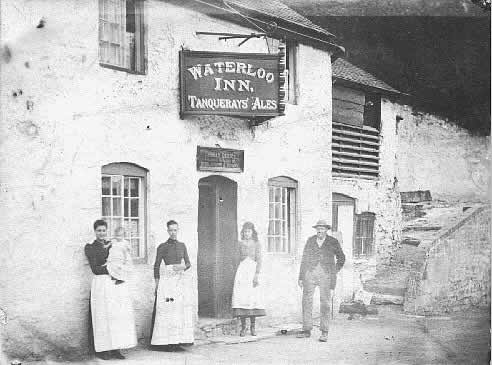 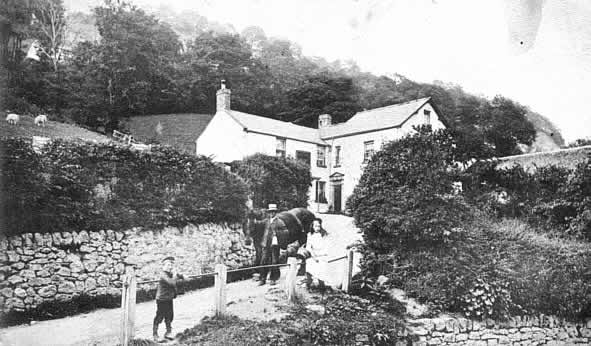  |
| top of page |
Although the surrounding villages
did (and in some cases still do) have a few small shops, most
retail outlets have always been in the centre of Llangollen.
Whilst some of the everyday shops, such as grocers, ironmongers
and butchers remain, many others like plumbers, shoe shops
and clothes shops have given way to an increasing number of
tourist events. Below are shown just a few photographs from
the turn of the 20th century of some of the shops that
previously existed in Llangollen. |
|
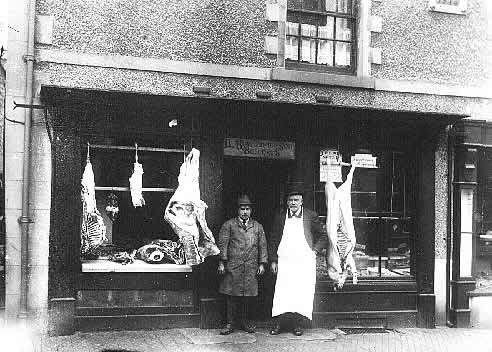
|
Llewellyn Rowlands
butchers on Bridge Street
|
|
Queues outside
Horspool's grocers |
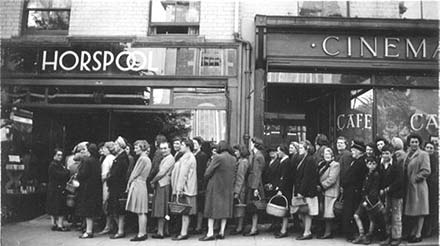
|
|
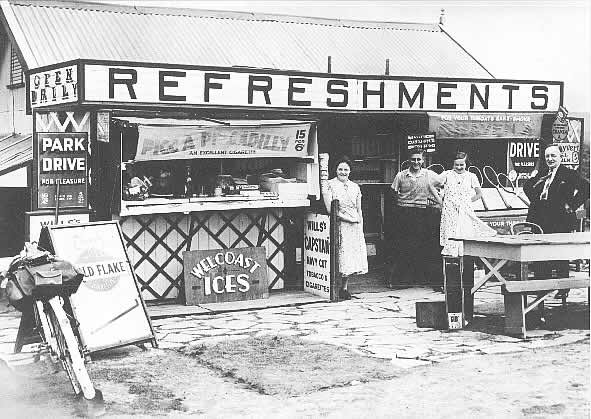
|
The first
refreshment shed on the Horseshoe Pass |
|
Became the Horseshoe
Pass Cafe
and later the
Ponderosa |

|
|
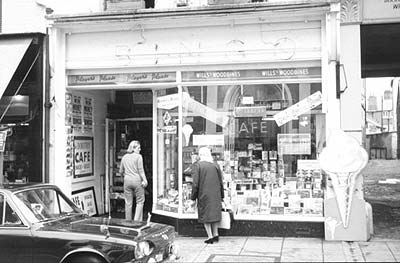
|
The Dorothy Cafe on
Castle Street |
|
The Yale Creamey
on the corner of Castle Street and Dee Lane |

|
|
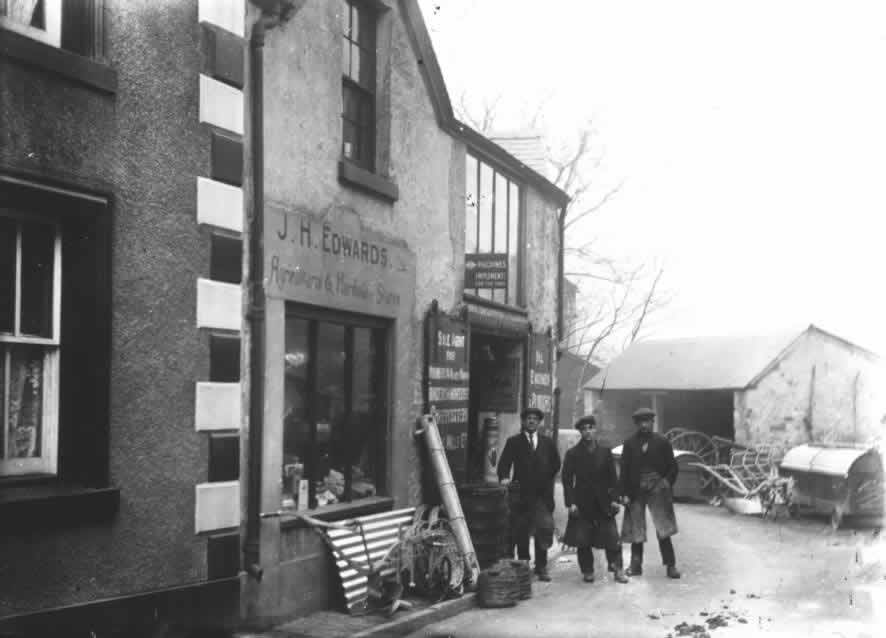
|
J.H. Edwards
blacksmiths on Dee Lane |
|
The shops at
Bridge End in the 1950s |
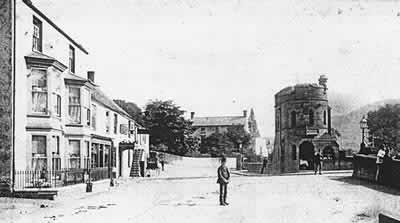
|
|
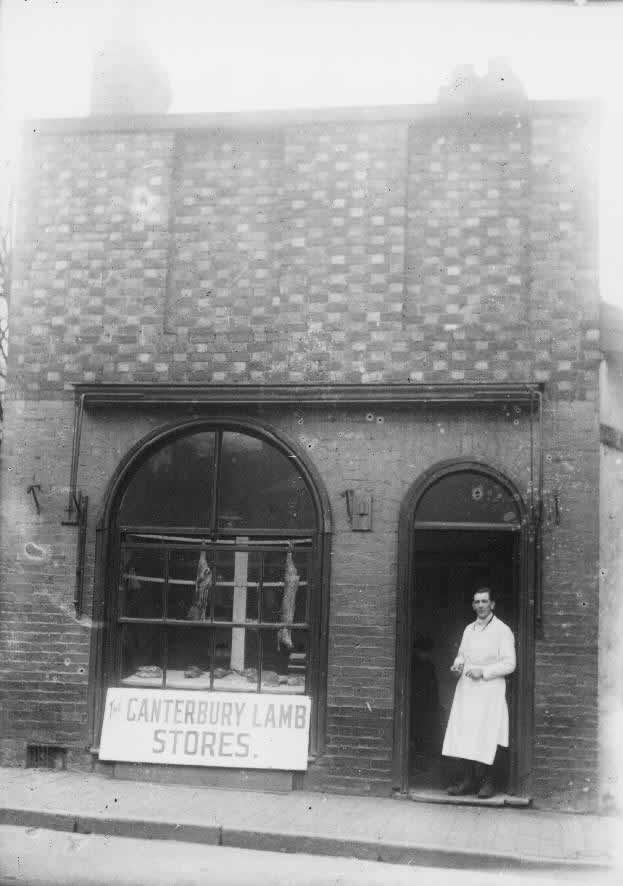
|
The Canterbury
Lamb Store on Castle Square |
top of page |
|
|


 Thomas Pugh and his wife Margaret. In 1845 Thomas Pugh died
and Margaret continued as landlady until around 1860 before
handing over to their son Samuel, who’s wife Sarah had died
8 years before.
Thomas Pugh and his wife Margaret. In 1845 Thomas Pugh died
and Margaret continued as landlady until around 1860 before
handing over to their son Samuel, who’s wife Sarah had died
8 years before.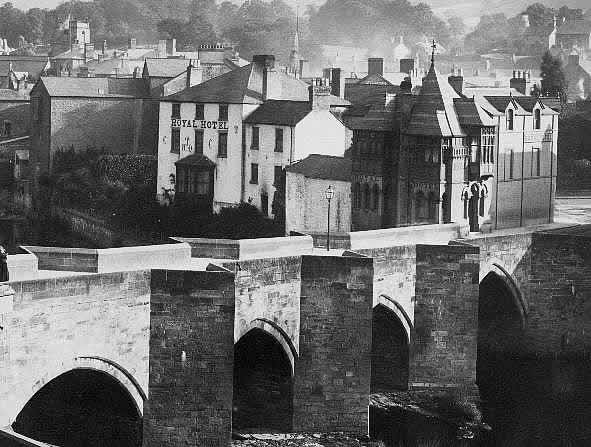
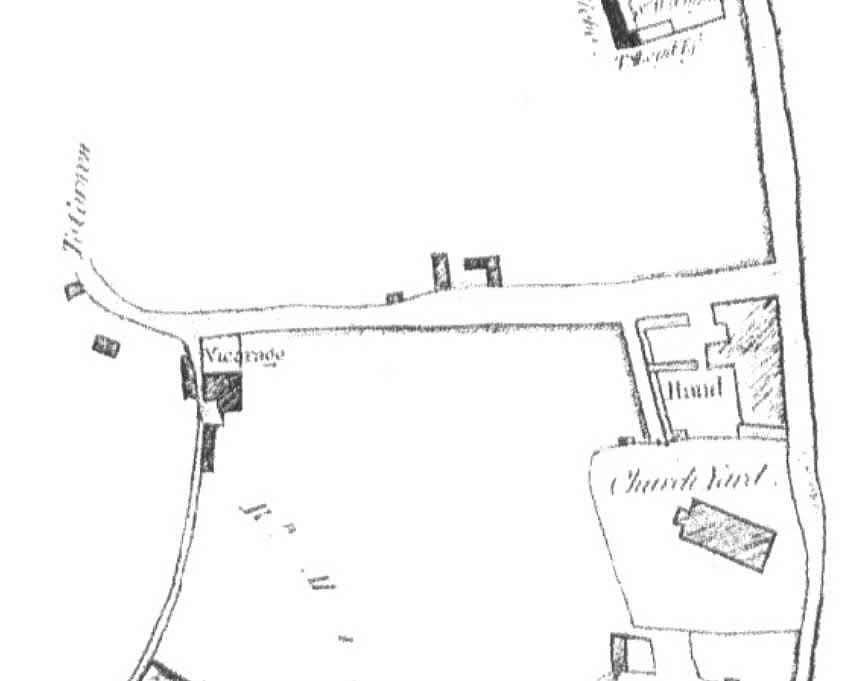
 Shown on a 1791 map as the
vicarage (see map right), by 1810 the building had become the George and Dragon
Inn. By 1825 it had changed name to the Grapes Hotel, which
it remained until 2002 when all except the frontage was re-built
and converted into private residences.
Shown on a 1791 map as the
vicarage (see map right), by 1810 the building had become the George and Dragon
Inn. By 1825 it had changed name to the Grapes Hotel, which
it remained until 2002 when all except the frontage was re-built
and converted into private residences.












